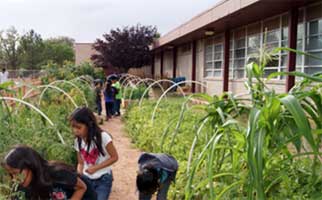A Message for our Guests:
 Early in Gregory Cajete’s Look to the Mountain, his seminal work describing the ecology of indigenous education, he said, "One of the most important elements of Indigenous teaching and learning revolves around ‘learning how to learn.’ Learning how to learn is a key element in every approach to education. Therefore, the cultivation
of the human capacities of listening, observing, experiencing with all one's senses, developing intuitive understanding, and respecting time-tested traditions of learning naturally formed the basis for skills used in every process of Indigenous learning and teaching."
Early in Gregory Cajete’s Look to the Mountain, his seminal work describing the ecology of indigenous education, he said, "One of the most important elements of Indigenous teaching and learning revolves around ‘learning how to learn.’ Learning how to learn is a key element in every approach to education. Therefore, the cultivation
of the human capacities of listening, observing, experiencing with all one's senses, developing intuitive understanding, and respecting time-tested traditions of learning naturally formed the basis for skills used in every process of Indigenous learning and teaching."Teaching and learning these human capacities can be dramatically enhanced by moving beyond the traditional classroom out into the natural environment. One of the better ways to provide some structure and rigor to that experience is to engage students in planning, growing, harvesting and eating the products of a school garden. If it is well organized and implanted, a school garden provides not only valuable lessons about gardening, but it also provides a hands-on opportunity to implement the lessons of traditional classroom topics, such as mathematics, biology and ecology, history, language, sociology, and climatology. The school garden experience can also strengthen the bonds of students with their families and community because successful group gardening also requires collaboration, mutual respect, curiosity, effective communication, cooperation, inclusion, and many other social skills.
This web site is designed to provide educators with school garden best practices, planning tools, content and funding resources, and sample curricula for the development of place and situation specific school garden programs. The site collects in one place many of the best examples of successful school gardens, and the learnings that went into producing those successes. A special focus of this material is on school garden programs for First Nations teachers and students, but much of the gardening approaches apply just as well to non-indigenous as to indigenous learners.
We hope you will find this resource useful. We would appreciate any feedback you can provide, as well as information on other materials which should be added to this web site. Best wishes for a successful teaching experience in your school garden.
Please see top menu for content.